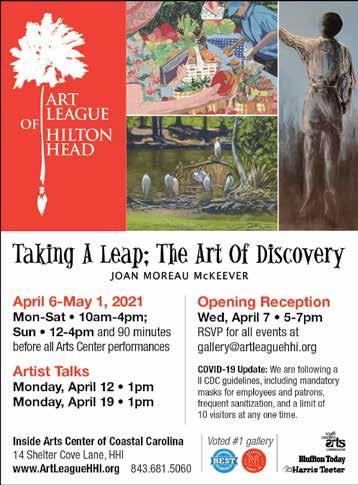
6 minute read
Benefit to your Body Why
DVITAMIN D
HERE’S WHY IT BENEFITS YOUR OVERALL HEALTH
Advertisement
BY HILTON HEAD REGIONAL HEALTH CARE
If you’re looking for a reason to enjoy some time in the sun, call it “getting your vitamin D.” Five to 10 minutes a day, two to three times a week, can help your body create the vitamin D it needs. Technically, vitamin D is a pro-hormone. (Vitamins are nutrients that you primarily receive through diet.) Here’s why vitamin D is so important:
ENABLES STRONG BONES. Vitamin D helps regulate and make use of calcium and phosphorus, two ingredients of strong bones. And strong bones are your best defense against osteoporosis.
SUPPORTS MUSCLE MOVEMENTS. Nerves need vitamin D to
carry messages from the brain to parts of the body.
DEFENDS AGAINST COLDS AND FLU. Studies show that ade-
quate levels of vitamin D can help reduce the risks of colds and flu. MAY LOWER RISK FOR CHRONIC DISEASES. Vitamin D
deficiency has been connected to the incidence of diseases such as type 2 diabetes, cardiovascular disease and cancer. While the direct evidence is not conclusive due to many variables, vitamin D plays a role across numerous body functions.
ARE YOU AT RISK FOR VITAMIN D DEFICIENCY?
Symptoms of vitamin D deficiency may not be obvious, and it can be difficult to get sufficient vitamin D from only natural sources. Six factors that may decrease availability of vitamin D include:
AGE. Your skin has reduced ability to synthesize vitamin D as you get older. And elderly people may be more likely to spend time indoors.
INDOOR LIFESTYLE. Office workers, homebound individuals or people who consistently wear long sleeve shirts and pants reduce the opportunity for natural vitamin D.
DARK SKIN. Darker skin tends to produce less vitamin D from the sun.
OBESITY. Greater amounts of fat absorb vitamin D, inhibiting its use via blood.
GASTRIC BYPASS SURGERY. Because part of the small intestine that absorbs vitamin D is bypassed, the vitamin may not be available for use.
LACK OF FAT ABSORPTION. Vitamin D is fat-soluble and needs the body’s ability to process fat properly. Diseases such as inflammatory bowel disease, Celiac disease, some liver diseases or cystic fibrosis can decrease fat absorption and may inhibit the use of vitamin D.
FOOD SOURCES OF VITAMIN D
Sunlight is the most common natural source for vitamin D. Fish oils and fatty fish such as cod liver oil, herring, salmon and sardines are also natural sources. Milk is also often fortified with vitamin D.
NEXT STEPS
Having less than 30 nmol/L is too low for overall health for most people. It is rare that someone would have too much. Groups that are most likely to have lower levels of vitamin D are: ● Older adults: Skin doesn’t produce as efficiently and kidneys less able to convert to active form. ● People with dark skin: Less ability to convert vitamin D from the sun. ● People with Crohn’s disease or celiac disease: Disease inhibits absorption. ● Obese people: Body fat may prevent absorption. ● Breastfed infants: Human milk is not a good source of vitamin D.
Talk with your doctor before self-prescribing a vitamin D supplement. Vitamin D supplements may interact with several types of medications. Ask your doctor if he or she recommends a blood test to determine your vitamin D level as part of routine bloodwork.
MARIANNE STILLWAGON FOLLOWS HER ARTISTIC PATH
playing with
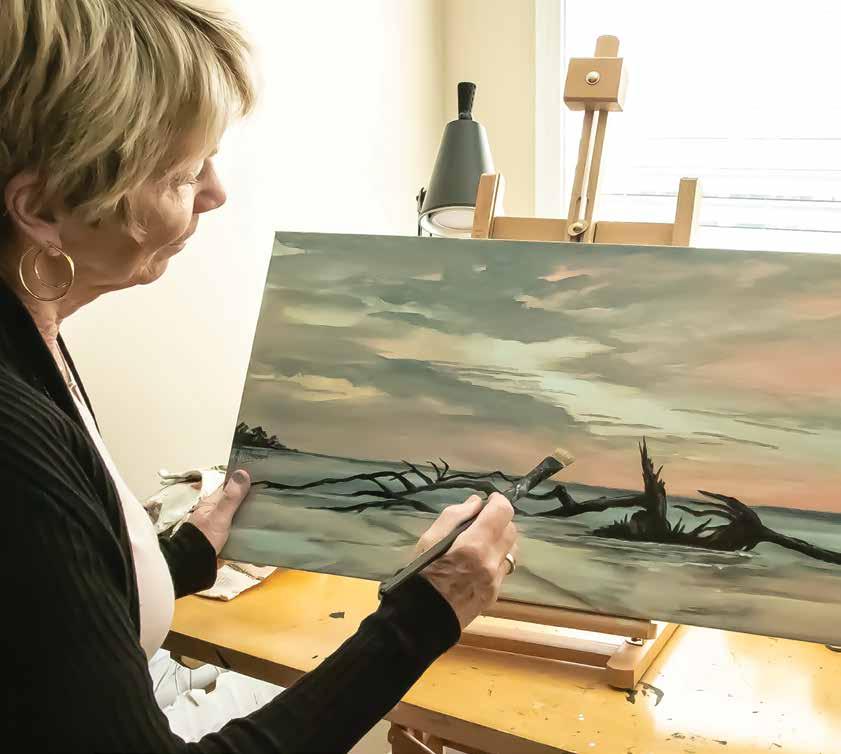
COLOR.
BY VICKIE MCINTYRE PHOTOS BY MADISON ELROD
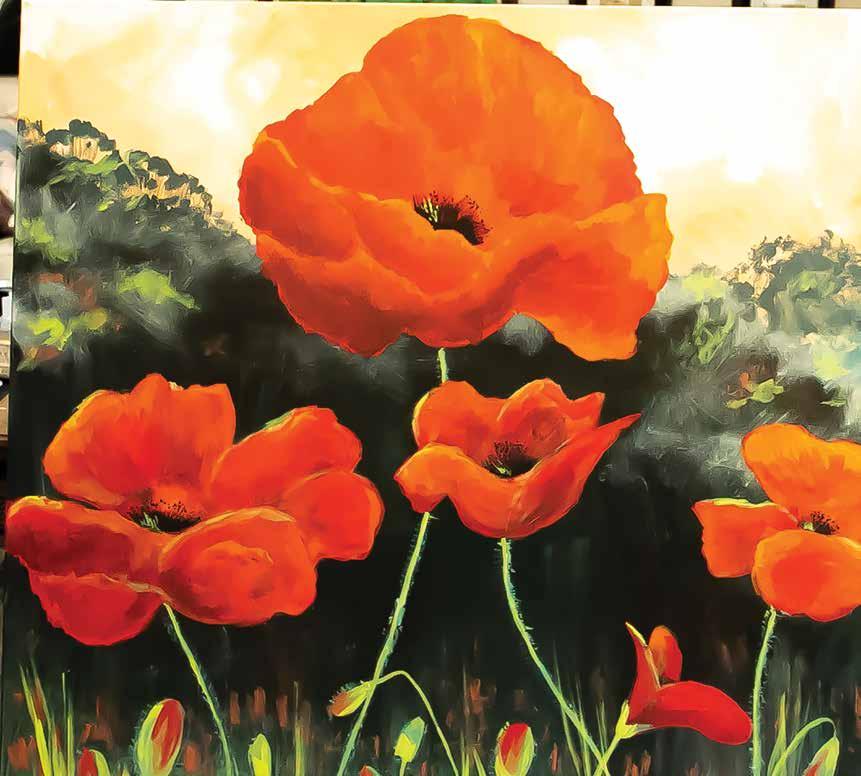
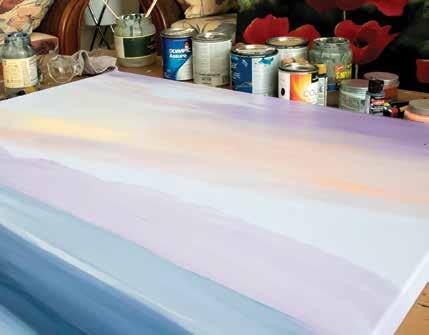
For Marianne Stillwagon, becoming an artist was never about following a straight line.
“I was always a creator,” she laughs, admitting that she loved being a Girl Scout because, “we were always making things.”
Painting and playing with colors made Stillwagon happy, but when Douglas College, part of Rutgers University, offered her a full scholarship, her mother refused to let her go unless she promised not to major in art.
“This was back in the ‘60s,” she said.
Her mother feared she’d end up on a street corner trying to make a living, so she majored in microbiology.
A year later, unhappy with her choice, she put her studies on hold. Marriage and raising two sons followed. Eventually, Stillwagon pursued a degree in graphic design.
As a freelancer, she poured her talents into creating handdrawn ads and designs, but when computer software made her skills unnecessary, she said, “Okay, I’ll paint.”
Her husband became her biggest cheerleader, always promoting her work, even to strangers.
Residing in New Hampshire at the time, she put her training as a designer to use, depicting the colonial towns and snowy villages surrounding her in a style she calls, “Contemporary Primitive Americana.”
Embraced by the New Hampshire Art Association, she garnered a loyal following and became a full-time, recognized artist.
Life changed drastically in 1995, when her husband had a massive stroke. Committed to being his primary caregiver, Stillwagon often rose at 5 a.m. to find a few hours for painting before tending to his needs.
Six years ago, the couple relocated to Hardeeville for half the year to escape New England’s cold winters. Stillwagon decided it was the perfect time to branch out and do something different.
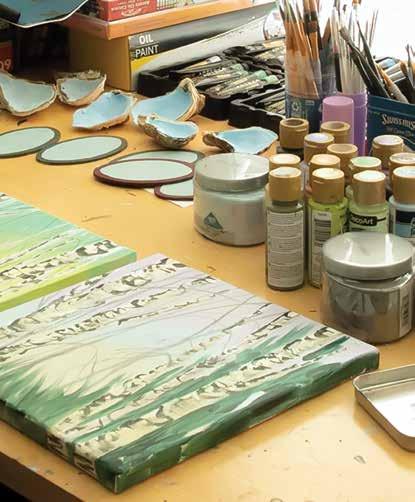
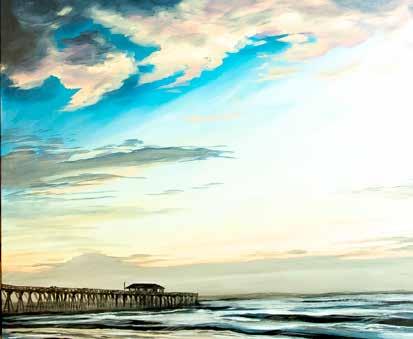
“People here don’t want to look at winter scenes,” she quips.
Her first paintings focused on magnolia blossoms. Then blue herons. Eventually wood storks and egrets.
“I morphed into being freer,” she says, adding that she found a receptive audience at local shows like the Art Market at Historic Honey Horn and the Shelter Cove Festival.
Her work, “Reflections of The Lowcountry,” was featured at the Society of Bluffton Artists gallery in January.
Inspired by photos she’s taken, Stillwagon works only in acrylics. Her palate often includes soft tones like seafoam green or misty blue, but her collection of poppy-filled canvases burst with rich reds and hints of orange.
“I love experimenting with color,” she said. “Sometimes I think it’s an outlet of my mood.”
Shrugging at the need for rules, she paints when she’s inspired and walks away when she’s not. She’ll use tubes of paint as readily as gallon cans from the hardware store, though she rarely uses an easel. Instead, she places canvases on the coffee table in her studio, located atop a short flight of stairs from her living room.
Kneeling or standing, she works as long as she’s “in the zone,” often skipping meals and refusing to take breaks.
Art fills her home, much of it her own. From canvas floor cloths bearing flower blossoms to bold abstracts highlighted in metallic paint to contemporary depictions of palm trees and deserted beaches, Stillwagon’s creations reflect the beauty of the natural world.
Her latest obsession is painting skyscapes, something she attributes to her husband, who passed away in September. With every stroke, she feels his influence.
“Everybody has their own pathway to follow in art,” she reflects. “And sometimes you get inspiration from places unknown.”
